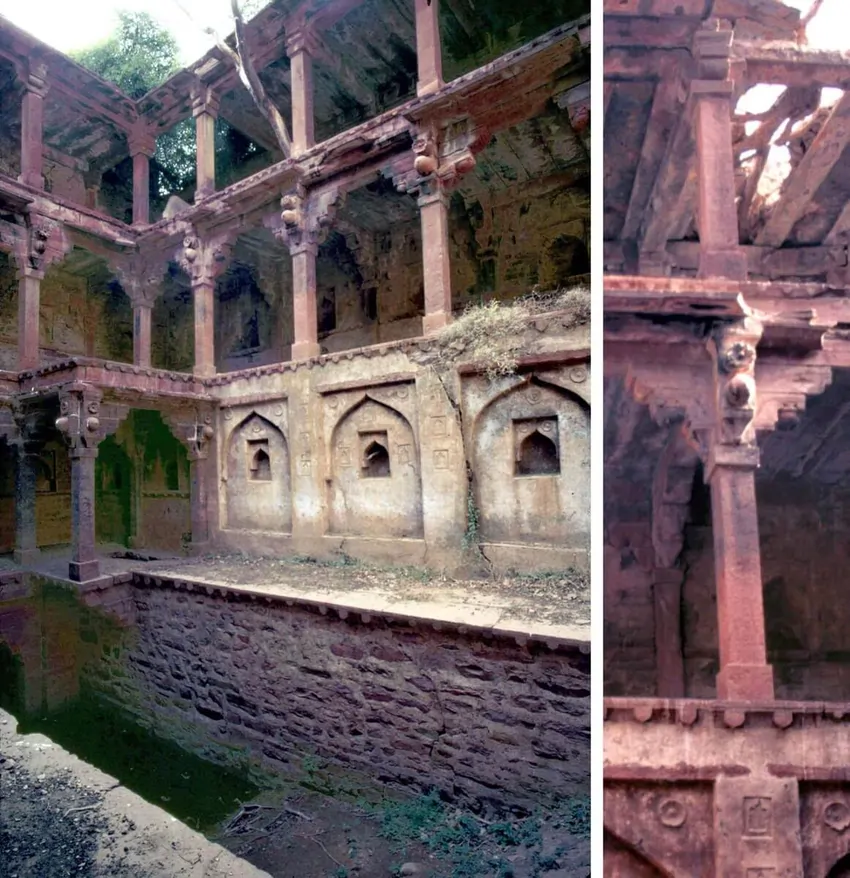According to genealogical tree of the Pashtun nation, Farmuli (or Parmuli) was one of the twenty-four sons of Kakar, son of Danaey [1]. Ravery is of opinion that Farmuli was probably an adopted son of Kakar [2]. The Farmulis identified themselves as Pashtuns in 16th century India and treated themselves as sub-division of Ghurghashti. In an inscription from the times of Mughal king Babur, a Farmuli noble has been referred to as Afghan (Pashtun):

However, some objection was raised to the Farmulis being considered Pashtuns in the reigns of Sikandar Lodi and Sher Shah.
The author of Makhzan-i-Afghani describes the Farmulis as follow: “They (Farmulis) are inhabitants of a place called Farmul, which is originally the name of a river running between the confines of river Kabul and Ghaznin ; and whoever lives on its banks is called Farmuli . The ancestors of the Farmulis were guided to Islam by Shaikh Muhammad Musalman , a great saint among the Afghans; and having passed sometime in the service of this saint, they style themselves Afghans. They however confess, that their forefathers came from the quarters of Khata and Khotan, and that inhabitants of those regions acknowledged them to be Afghans” [3]
Emperor Babur speaks repeatedly of ‘Farmul’ in his description of Kabul. He explicitly states that the “Shaikhzadas, the descendants of Shaikh Muhammad Musalman, who were so much in favour during the Afghan period in Hindustan , came originally from Farmul. He tells us that Farmul was one of the 14 divisions of Kabul. It lies south-east of Ghazni.
19th century British authors have identified Farmulis as Tajiks. Mountstuart Elphinstone in 1810s writes : “The Poormoolees or Fermoolees are a division of Taujiks , about equal in numbers to the Burrukees . The bulk of them inhabit Oorghoon in the midst of the Kharottee country and carry on a bitter and unceasing war with that tribe : the rest live to the west of Caubul. They are chiefly employed in trade and husbandry, but furnish some soldiers to the King, to whom they also pay revenue. In the footnotes Elphinstone adds: “They (Farmulis) are said to be descended from the Khullujees (Khaljis), who are well known to have given a dynasty of kings to India “. [5]
According to the author of Hayat-i-Afghani: ” Most of the Farmulis are cultivators or merchants, but those settled in Argun make vessels of iron and take them throughout western Afghanistan for sale.” [6]
Waqiat-i-Mushtaqi also throws some light on the origin of Farmulis when it refers to Said Khan Lodi’s (Yusuf Khel) remarks against Masnad-i-ali Mian Hussain Farmuli that Said Khan said to Rana Sanga about the Masnad-i-ali;
“They are the Shaikhzadas like the Brahmans among you. We have raised them. We are the brethren of the king. According to the customs of the Afghans, sovereignty will either rest with the Shahu Khel or the Yusuf Khel. The rest are the servants.”
The Farmuli nobles were held in high esteem and confidence by the Lodi Sultans. Mian Muhammad Farmuli, the famous muqta of Awadh and Bahraich, was Sultan Bahlul’s sister’s son (nephew). During the Sultan Ibrahim’s reign Mian Mustafa Farmuli and his younger brother, Bayazid Farmuli, rendered important services to the Sultan by fighting against the rebel amirs.
According to Waqiat-i-Mushtaqi, “half of the kingdom (under Sikander Lodi) was held by the Farmulis. ‘
List of high-ranking Farmuli nobles in the service of Sultan Ibrahim Lodi
1- Shaikhzada Muhammad Farmuli (commander of 30,000 to 40,000 cavalry, governor of Awadh and Lakhnau)
2- Miyan Hussain Farmuli (previously governor of Saran and Champaran)
3- Miyan Maruf Farmuli
4- Miyan Taha Farmuli ( a captain of war, brother of Miyan Maruf)
5- Miyan Muhammad known as Kalapahar Farmuli (governor of Bahraich)
6- Miyan Sulieman Farmuli (commander of 5,000 cavalry, governor/muqta of Indri)
7- Shaikhzada Mahmud Farmuli (a captain of war)
8- Masnad-i-ali Bhikan Khan Farmuli (a captain of war)
9- Khan-i-Khanan Farmuli (a captain of war)
10- Shaikhzada Manjhu Farmuli (governor of Chanderi)
11- Shaikh Said Farmuli (muqta of Harianah and Daisuya)
12- Shaikh Bayazid Farmuli

References
1- “History of Afghans”, B.Dorn, Vol-II, p-53
2- “Notes on Afghanistan”, H.G.Raverty, p-85
3- “History of Afghans”, B.Dorn, II, p-57
4- Proceedings of Royal Geographical society, 1879, pp-47-48
5- “An Account of the Kingdom of Caubul”, p-411
6- “Afghanistan and its inhabitants”, translated from Hayat-i-Afghani, p-302